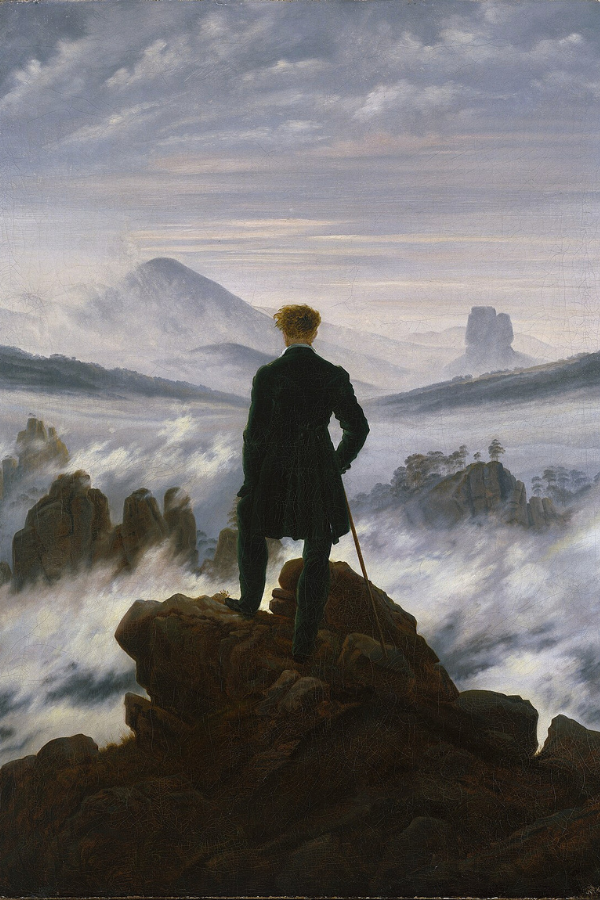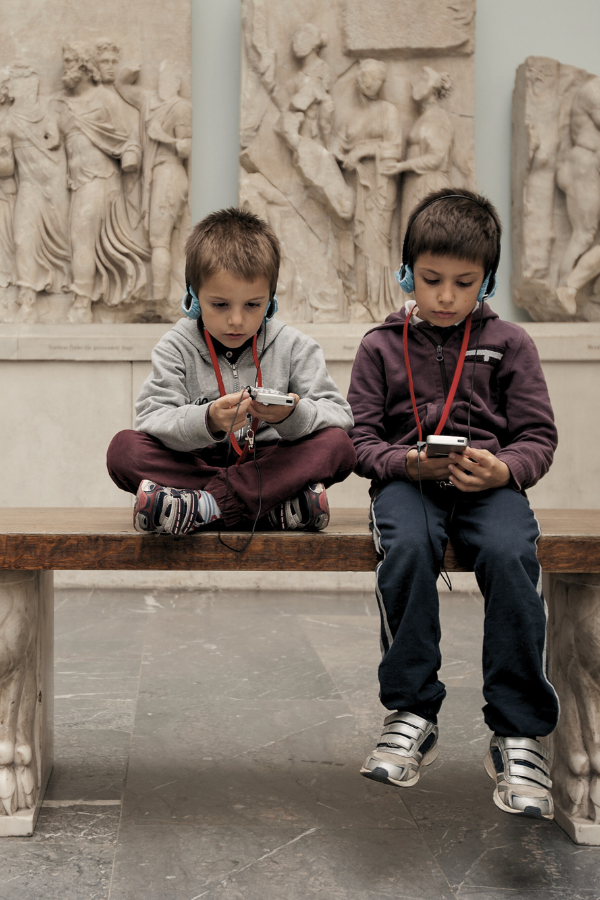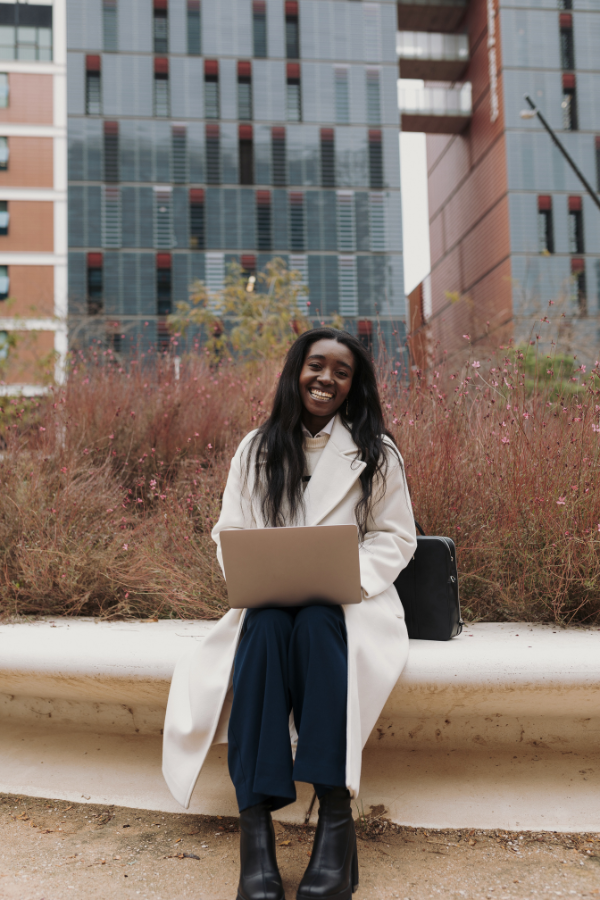
How Will AI Affect Fine Artists and Their Patrons?
Summary
Reflection Questions
Journal Prompt
The advent of artificial intelligence (AI) has disrupted many different sectors, radically altering landscapes from healthcare to finance, and more recently, the arts. This pervasive technology, once a figment of science fiction, now plays a pivotal role in reshaping creative processes and consumption patterns within the art community. In this article, we will critically examine the multifaceted effects of AI on fine artists and their patrons. By exploring how AI intersects with artistic creation and the nuances of art patronage, we intend to unravel the complexities AI introduces to the traditional art world, highlighting both the opportunities and challenges it presents for artists and their supporters.
Understanding AI in the Art World
AI Technology and Its Applications in Art
For those unfamiliar, Artificial Intelligence (AI) in the art world refers to the use of machine learning algorithms and neural networks to create, analyze, and interpret artistic works. These AI systems learn from vast datasets of existing art to generate new pieces or assist artists in their creative processes.
Current applications of AI in art include generative art, where algorithms produce unique compositions not explicitly programmed by humans. AI is also used for art analysis, helping in identifying artistic patterns, styles, and even authenticating artworks.
Moreover, AI facilitates interactive art experiences, where the viewer’s behavior influences the art piece, and in digital curation, where AI algorithms can create virtual art galleries personalized to viewers’ preferences.
Historical Context: Evolution of Technology in Art History
The integration of technology in art is not a new phenomenon but part of a long evolutionary process. Historically, technological advancements have consistently impacted artistic expression and reception. From the invention of the camera obscura in the Renaissance, which transformed perspectives in painting, to the advent of photography in the 19th century, challenging the role of paintings in replicating reality.
The 20th century saw the emergence of digital art with the introduction of computers, radically changing the methods of creating and disseminating art. Video art and digital installations became prominent, reflecting the influence of evolving technology on artistic experimentation. This historical progression towards increasingly sophisticated technological tools sets the stage for the current embrace of AI in the art world, marking a continuation of the longstanding relationship between art and technology.
Each phase not only provided new tools for artists but also opened debates about the nature of art and the role of the artist, a discourse that AI in the art world continues to this day.
How Do Artists Use AI?
Artists use AI generators and other artificial intelligence programs in several innovative ways to enhance their creative processes, explore new forms of expression, and engage with art in ways previously unimagined. While generating images is part of how artists use AI, it just scratches the surface of what’s possible. Let’s take a look at a few ways in which artists use AI.
Generative Art
AI programs can be used to create generative art, where the artist sets certain parameters or inputs (like color schemes, shapes, or patterns). An AI image generator then produces artwork based on these guidelines. This process can produce highly complex and unique artworks that might be difficult to achieve manually.
Collaborative Creation
Artists use AI as a collaborative tool, where the AI’s output serves as a starting point or inspiration for further artistic development. The artist might refine, reinterpret, or integrate the AI-generated piece into a larger work, creating a synergy between human creativity and machine intelligence.
Style Imitation and Experimentation
AI algorithms, especially deep learning models, can analyze vast datasets of artistic styles and then apply these styles to new creations. Artists can experiment with these capabilities to mimic the styles of famous painters or to blend multiple styles, creating unique hybrid artworks.
Interactive Art
AI is used in interactive art installations where the artwork changes in response to audience input or environmental factors. These installations use sensors and AI algorithms to create dynamic pieces that can react to movement, sound, or even social media trends.
Digital Sculpting and Modeling
In digital art and animation, AI-assisted tools can help in sculpting and modeling complex shapes and figures, speeding up the creation process and allowing for more intricate designs.
Enhancing Traditional Techniques
AI can assist in traditional art forms by providing tools for color correction, pattern generation, and layout designs, thus enhancing the artist’s ability to execute their vision.
Art Analysis and Curation
Artists and curators use AI to analyze art trends, styles, and techniques. This can help in understanding historical art movements or in curating art collections based on specific thematic or stylistic elements.
Personalization
AI algorithms are used to create personalized art based on individual preferences or data inputs. This can range from portraits stylized based on a person’s interests to art pieces that change according to the viewer’s reactions.
In all these applications, AI serves as both a tool and a medium, offering artists new ways to conceive, create, and interact with art. This partnership between human artists and AI is continually evolving, opening up unprecedented possibilities in the art world.
The Impact of AI-Generated Art on Fine Artists
AI as a Tool: Enhancements in Art Creation and Experimentation
The integration of AI into artistic practices has significantly enhanced the scope of art creation and experimentation. AI algorithms offer artists a new toolset for creativity, allowing them to explore unprecedented forms and patterns.
These algorithms can process and analyze vast amounts of visual data, offering artists insights that can inform their artistic decisions and inspire new creative directions. Additionally, AI aids in experimental art, where artists use algorithmic processes to generate complex, unpredictable artworks that challenge traditional notions of authorship and creativity.
This collaboration between human and machine opens up a realm of possibilities, enabling artists to push the boundaries of conventional aesthetics and conceptual art. Moreover, AI tools can assist in the logistical aspects of art creation, such as color matching and composition layout, streamlining the creative process and allowing artists to focus more on the conceptual elements of their work.
AI as Competition: How AI-Generated Art Challenges Traditional Artists
The emergence of AI-generated art poses new challenges for traditional artists, particularly in terms of the uniqueness and value of human-created art. AI’s ability to produce works that mimic or even surpass human creativity in certain aspects has sparked debates about the definition and value of art.
Some view AI art as a threat to the traditional art market, potentially devaluing the unique, human aspect of artistic creation. This challenge forces artists to reconsider their roles and the elements that distinguish their work from machine-generated pieces.
The situation prompts a reevaluation of the skills and perspectives that human artists bring to the table, emphasizing aspects like emotional depth, personal experience, and cultural context – elements that AI currently cannot replicate.
Skill Development: The Need for Artists to Adapt and Learn New Skills
In response to the integration of AI in the art world, there is a growing need for artists to adapt and acquire new skills. This adaptation involves not only understanding and utilizing AI tools but also developing skills that complement and exceed the capabilities of AI. Artists must cultivate a deep understanding of algorithmic processes to effectively collaborate with AI, using it as a tool rather than a replacement.
Furthermore, there is an increased emphasis on developing skills that are uniquely human, such as conceptual thinking, storytelling, and emotional expression. These skills ensure that artists maintain a distinct and irreplaceable role in the art world.
Additionally, artists need to stay abreast of technological advancements and trends, integrating them into their practice to remain relevant and competitive. This continuous learning and adaptation underscore the evolving nature of the artist’s role in a technology-driven world.
Changing Dynamics for Patrons
Collecting AI Art: Shifts in the Perception and Value of AI-Generated Artworks
The rise of AI in the art world has led to significant shifts in the perception and value of AI-generated artworks among patrons. Collectors traditionally prized human creativity and the artist’s personal touch as key-value determinants in art.
However, as AI-generated art gains prominence, it challenges these traditional metrics of value and authenticity. AI art’s ability to create complex and aesthetically pleasing works has intrigued collectors and opened debates about what constitutes artistic merit.
Some patrons see AI art as a novel and exciting frontier in the art market, while others remain skeptical about its long-term value and authenticity. This shift in perception is also influencing the economics of art collection, as AI art often comes with different pricing models and considerations, like the role of algorithms and data sets in the creative process.
Patrons now must navigate these new dynamics in determining the value and significance of AI-generated art in their collections.
Accessibility and Diversity: How AI is Democratizing Art for Patrons
AI technology is playing a key role in democratizing art for patrons, making it more accessible and diverse. With AI, there’s an increase in the production of diverse art forms, breaking down traditional barriers in terms of style, medium, and subject matter.
This diversity allows patrons to explore a broader range of artworks than ever before. Moreover, AI-driven platforms are making art more accessible to a wider audience. Online galleries, virtual exhibitions, and AI-curated collections allow patrons to discover and purchase art regardless of their geographical location or prior art knowledge.
This increased accessibility is expanding the art market, inviting a new, more diverse group of patrons who might have been previously excluded from the traditional art-collecting world.
The Role of Patronage: Evolving Responsibilities and Opportunities for Art Patrons in the AI Era
In the AI era, the role of art patrons is evolving, encompassing new responsibilities and opportunities. Patrons have the opportunity to be at the forefront of a new art movement, supporting AI artists and initiatives that are redefining the boundaries of art.
This involves not only funding AI art projects but also understanding the nuances of AI as a medium. There’s an increasing responsibility for patrons to engage with the ethical and legal aspects of AI art, such as issues around copyright and the originality of AI-generated work.
Additionally, patrons can play a role in shaping public perception and acceptance of AI art, advocating for its recognition and integration into the broader art world. This new era of patronage is characterized by a blend of traditional art appreciation and a forward-looking embrace of technological innovation, requiring patrons to be knowledgeable about both art and technology.
Economic Implications of AI Art Generators
Market Changes: The Impact of AI Image Generation on Art Pricing, Authenticity, and Originality
The advent of AI in the art world has profound implications for the economics of the art market, particularly in terms of pricing, authenticity, and originality. The production of AI-generated images introduces a new category of artworks whose pricing is yet to be standardized, creating both opportunities and challenges in the market.
The pricing of AI art often considers the novelty of the technology, the complexity of the algorithms used, and the data input, rather than the traditional metrics of artist reputation and manual labor involved. This shift could lead to a reevaluation of pricing structures across the art market, especially as more patrons become AI art enthusiasts.
In terms of authenticity and originality, AI-generated art challenges traditional notions of what constitutes an ‘original’ artwork. Did the program create AI-generated art, or can the human artist take credit? The reproducibility and algorithmic nature of AI models raise questions about its uniqueness, which is a key determinant of value in the art world.
As a result, the art market is adapting to include considerations of data uniqueness, algorithmic complexity, and the artist’s creative input in the valuation of AI art.
New Revenue Streams: How Artists and Patrons are Leveraging AI for Financial Benefits
AI technology is enabling artists and patrons to tap into new revenue streams. For artists, AI opens up possibilities for creating art in innovative ways that can appeal to a broader audience, thereby expanding their market reach.
Artists are leveraging AI to create personalized art pieces, offer unique digital experiences, and even generate art in real-time to facilitate dynamic art exhibitions, which can be monetized through digital sales, commissions, and exhibitions. Additionally, AI allows artists to automate some aspects of their creative process, increasing their efficiency and enabling them to focus on higher-value creative work.
For patrons and investors, AI art represents a new asset class with potential for high returns, especially for early adopters who invest in AI art before it becomes mainstream. It goes far beyond the AI art generator app one uses to create images. AI also provides tools for analyzing art market trends, potentially enabling smarter investment decisions.
Furthermore, the digital nature of many AI artworks facilitates easier online sales and global reach, opening up additional revenue opportunities in the digital art market. These developments suggest that AI is not just changing the artistic landscape but also creating new economic models and opportunities in the art world.
Ethical and Legal Considerations
Copyright and Ownership Issues: Who Owns Artificial Intelligence Art?
The rise of AI in art creation brings to the forefront complex copyright and ownership issues that challenge existing legal frameworks. One of the primary questions is who holds the copyright to AI-generated art: the artist who designed the AI program, the programmer who wrote the code, or the AI itself?
Current copyright laws are predominantly built around human authorship, leaving a grey area when it comes to artworks produced by machines. Furthermore, the use of pre-existing artworks to train AI systems raises additional questions about derivative works and infringement.
These issues necessitate a re-examination of copyright laws to accommodate the evolving landscape where human and machine collaboration is becoming increasingly common. The art world, legal experts, and policymakers are thus faced with the task of developing new guidelines and laws that address these unique challenges posed by AI in the realm of artistic creation.
Authenticity and Ethics: Debates Over Originality and Artistic Integrity
The integration of AI in art also sparks significant debates over authenticity, originality, and artistic integrity. Traditional conceptions of art heavily emphasize the artist’s personal vision and hand in the creative process.
AI artwork, by contrast, is often the product of algorithmic computations and data processing, leading to questions about its authenticity as a form of artistic expression. Critics argue that the lack of a human touch in AI art challenges the very essence of what is considered genuine art.
There are also ethical considerations around transparency in the use of AI in art creation. Artists using AI tools must navigate how much they disclose about the role of AI in their work, particularly when it comes to the sale and exhibition of such pieces.
These discussions reflect broader concerns about the role of technology in art and the evolving definition of what constitutes true artistic creation. As AI continues to become more prevalent in the art world, these debates are set to shape the discourse around the value and recognition of AI images.
Should Artists Use AI or Rely Solely on Traditional Methods?
The question of whether fine artists should use AI and image generators in their art or rely solely on traditional methods is complex and multifaceted. This debate touches upon the essence of artistic expression, the evolution of art forms, and the role of technology in creative processes.
Making the Case for AI in Art
On one hand, the integration of AI and image generators represents a cutting-edge frontier in the art world. These tools offer artists new ways to experiment and push the boundaries of traditional artistic expression. AI can process and analyze vast datasets, providing artists with unique patterns, compositions, and color schemes that might not be readily apparent or achievable through conventional means.
This technology can act as a collaborative partner, expanding the artist’s creative capacity and opening up new avenues for exploration and innovation. Additionally, embracing AI and digital tools can be seen as a natural progression in the evolution of art, reflecting the current technological zeitgeist much like photography did in the 19th century.
Arguments for Preserving Craftsmanship and Human Touch
On the other hand, there are arguments for preserving traditional methods in fine art. These methods have a rich history and cultural significance that many artists and art enthusiasts deeply value. Traditional techniques like painting, sculpting, and drawing are often celebrated for their tactile nature and the direct, physical engagement of the artist with their materials.
There is a concern that relying on AI and image generators could diminish the authenticity and personal touch that is intrinsic to fine art. Moreover, some critics argue that AI-generated art lacks the emotional depth and intentionality typically associated with human-created art, as the machine does not possess consciousness or emotions.
Furthermore, there is a discussion around skill and mastery. Traditional art forms require years of practice and refinement of skills, whereas AI can produce complex artworks with minimal human input. This raises questions about the value of technical skill in art and the role of the artist in the creative process.
Ultimately, the decision to use AI and image generators in fine art should be determined by the individual artist’s goals, values, and artistic vision. Some artists may find that these technologies enhance their creative expression and allow them to explore new artistic realms.
Others may prefer to maintain traditional methods to preserve the human touch and craftsmanship in their work. Both approaches have their merits, and it’s possible for traditional and AI-assisted art to coexist, each contributing to the rich and diverse tapestry of contemporary art. The key lies in understanding and respecting the unique qualities and contributions of both methodologies.
Future Prospects and Predictions
Potential Advancements in AI and Their Implications for Artists and Patrons
The future of AI in the art world is poised for significant advancements that will have profound implications for both artists and patrons. As AI technology continues to evolve, we can expect more sophisticated algorithms capable of producing increasingly complex and nuanced artworks.
These advancements may lead to AI systems that can mimic a broader range of artistic styles or even develop unique styles, thereby expanding the boundaries of what is considered possible in art creation. For artists, this means an opportunity to engage with more advanced tools that can enhance their creativity and productivity. However, it also raises the challenge of staying relevant in an environment where AI is capable of producing high-quality art independently.
For patrons, the evolution of AI art is likely to create a more diverse and dynamic art market. As AI becomes more prevalent, we may see a rise in the popularity and acceptance of AI-generated artworks, potentially leading to an increase in their value and collectability.
This shift will offer patrons a broader range of artworks to choose from, including pieces that blend human and AI creativity in novel ways. Additionally, advancements in AI could lead to more personalized art experiences for patrons, with AI algorithms curating and creating art that aligns with individual preferences and tastes.
Artists’ and Patrons’ Adaptation Strategies for the Future
In response to these advancements, both artists and patrons will need to develop strategies to adapt to the changing landscape. Artists will need to focus on honing skills that differentiate them from AI, such as conceptual thinking, storytelling, and imbuing their works with human emotion and experience – aspects that AI cannot replicate. Embracing and incorporating AI into their creative process can also be a strategy, using it as a tool to explore new artistic territories and expand their capabilities.
Patrons, on the other hand, will need to become more knowledgeable about AI and its role in art creation. This includes understanding how AI art is made, the nuances of its valuation, and the ethical considerations involved in its collection.
They may also need to adapt their criteria for collecting and appreciating art, considering the unique qualities of AI-generated artworks. As the art world continues to evolve with AI, patrons who are adaptable and open to new forms of art are likely to find rewarding opportunities in this new landscape.
Overall, the future of AI in the art world is characterized by a blend of challenges and opportunities, requiring both artists and patrons to remain flexible and forward-thinking in their approach to art.
Final Thoughts on the Use of AI in Art
The advent of AI in the art world marks a significant shift in the art ecosystem, presenting both challenges and opportunities for artists and patrons alike. AI’s impact extends from the creation and appreciation of art to its market dynamics and ethical considerations, fundamentally altering traditional notions of artistic production and value.
As we move forward, the art world must navigate the delicate balance between embracing technological innovation and preserving the irreplaceable elements of human creativity. The future of art, influenced by AI, will likely be a collaborative landscape where technology enhances and extends human artistic expression rather than replacing it.
This evolving synergy between human ingenuity and AI presents an exciting frontier, one that promises to redefine the boundaries of art and creativity.








